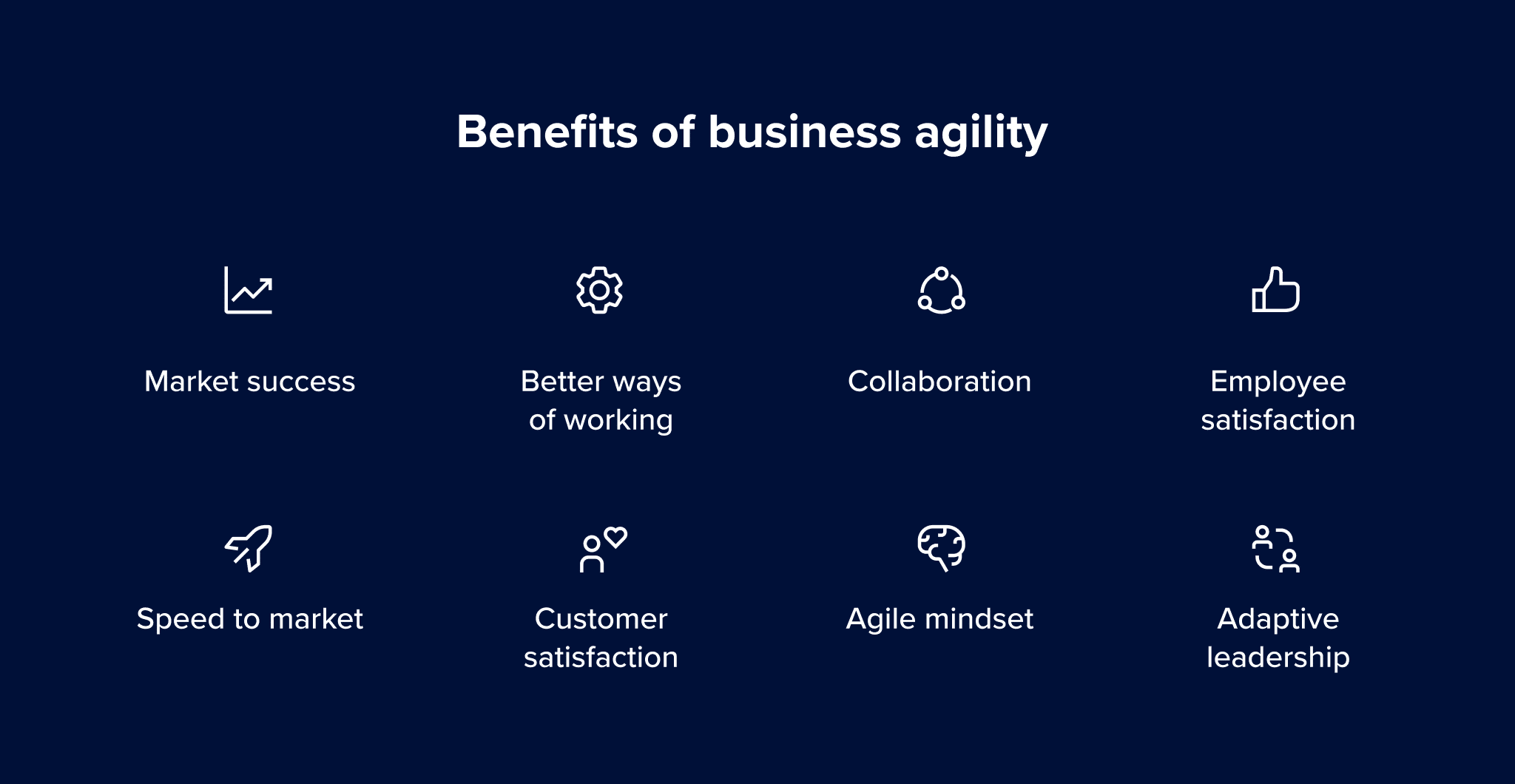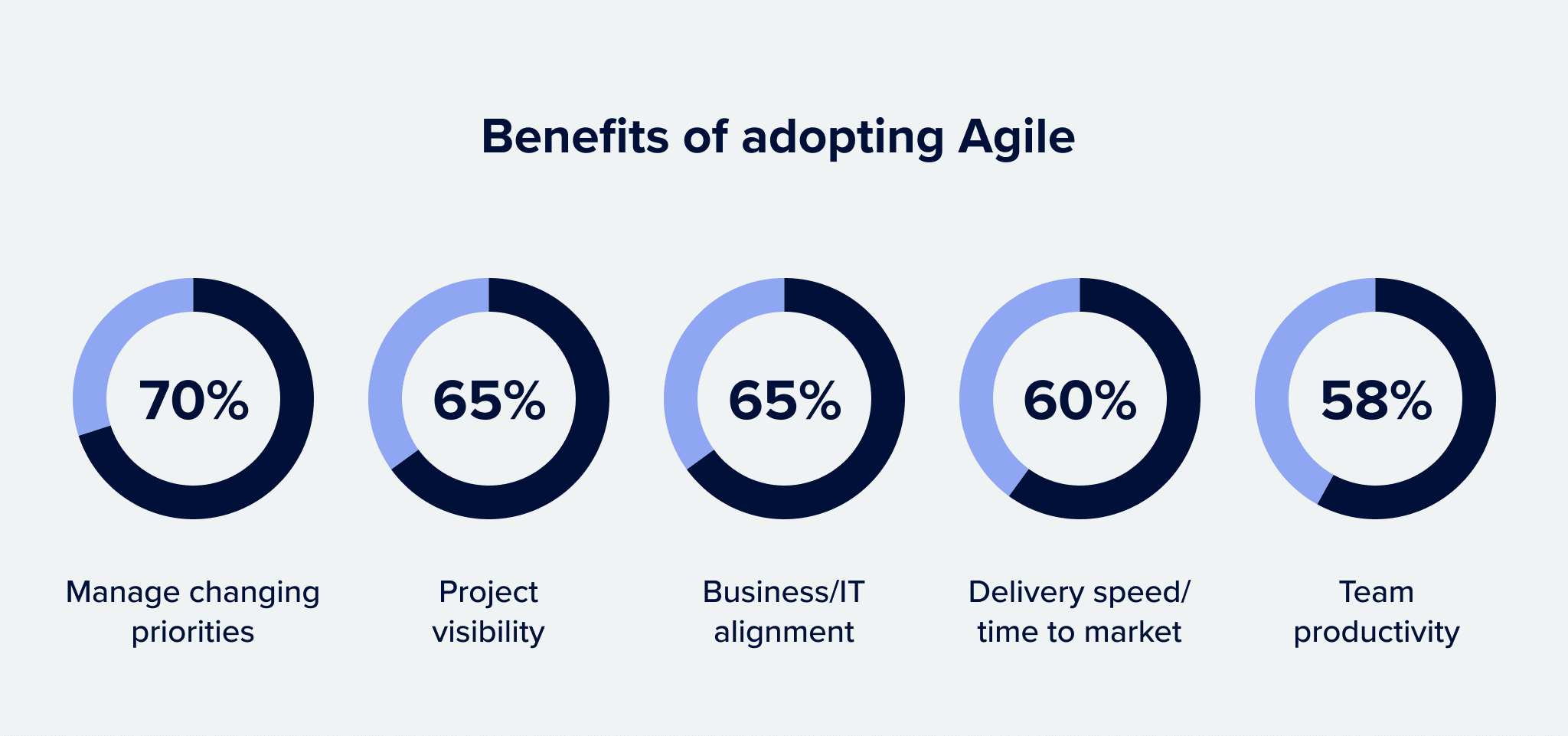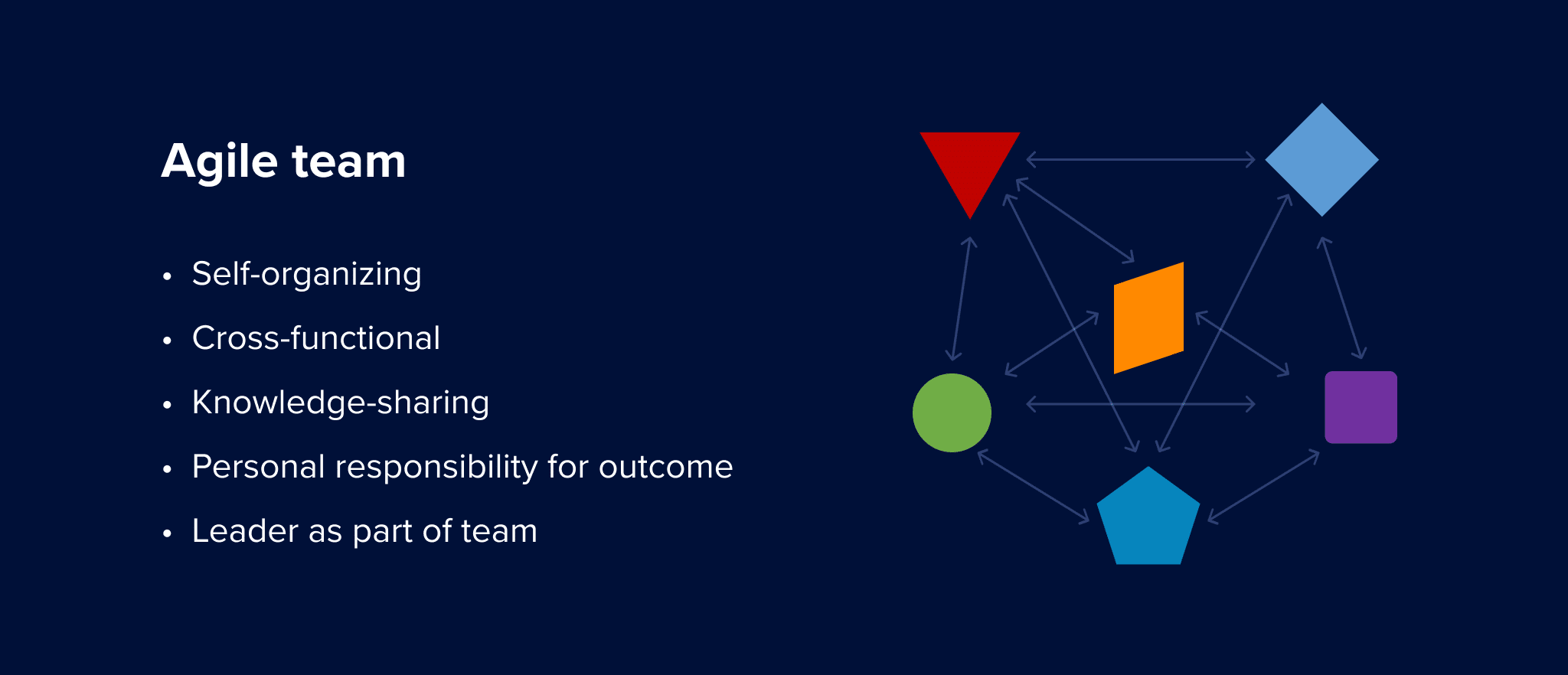If the past year has taught us anything, it’s that you never know what’s around the corner. Businesses know this more than most, yet many persist with long-term planning because that’s the way they’ve always done things.
In fact, a survey by the Business Agility Institute found that an estimated 71 percent of businesses have low business agility.
The ability of an organization to be flexible and adaptive is crucial in a rapidly-changing world—not only reacting to market changes, but also adjusting to developments within the business itself.
Adaptability will enable your company to survive and grow, no matter what 2021 (or any other year) throws at us. Let’s explore how to develop an agile mindset, and the best tools to help you do it.

What does business agility mean?
For those who are unsure, it may help to provide a definition of business agility before we go any further. Basically, it’s a customer-centric organizational method that helps businesses adapt quickly to internal or external environment changes. All while maximising potential and profits.
The concept was originally established for software development, where ever-changing requirements and uncertain outcomes demanded a more flexible approach. However, the business model can be used for any organization from start-ups to enterprise level.
Business agility also lets companies identify cost-effective ways to innovate, without compromising product quality or customer service. In the digital age, agility is the ability to compete and thrive by delivering inventive, digitally-enabled enterprise solutions.
Instead of traditional frameworks and models, business agility is based on agile principles like product innovation, delivery agility, organizational adaptability, and effective leadership.
Flexible, highly-motivated teams collaborate to identify customer needs, brainstorm solutions, and deliver value—often using agile processes such as:
- SAFe
- Scrum
- Kanban
- Extreme Programming (XP)
Why do businesses need agility?
Agile enterprises are better equipped to handle a changing environment, and are more responsive to customer demands. They can react proactively to market volatility and adapt products or services accordingly, or create a roadmap for launching something new.
Dispensing with restrictive long-term planning leaves businesses free to adapt much faster than those who stick rigidly to a predetermined strategy. Agility also allows firms to gain a competitive advantage by spotting short-term opportunities and adjusting their strategy to fit.
Meanwhile, the cross-functionality that comes with business agility is a great way to break down silos, decentralize decision-making, and encourage innovation. Collaboration tools like RingCentral will help build a supportive environment where all ideas are welcomed.
Agile businesses are truly customer-centric, with teams listening to clients in order to find real-world solutions. They are also better-placed to recognize problems and rectify mistakes, leading to a superior user experience.

How do you get business agility?
Business agility works on the principle that change is driven by people rather than processes—so it’s vital to find the right people for the team, and foster engagement via clear goals and great communication.
An agile framework means creating cross-functional teams, dividing projects into short iterations, and ensuring the customer comes first. If it’s your first time using agile, you could download a template from websites such as www.agilebusiness.org
Choose the right people
Agile teams need people with specific skill sets, sure. But you should also pick people who are the best fit for an agile approach—they should be open-minded, flexible, good communicators, and focused on a shared vision.
Agile teams must also be:
- Cross-functional
- Self-organizing
- Strongly-led
Cross-functional
Cross-functionality is an important concept in agile teams. Members should possess a varied range of skills and talents, enabling them to bring all the required expertise to the project. This way, they can handle everything as a unit, creating a smoother workflow.
Business agility requires some fluidity in roles and responsibilities, and the team’s overall functionality is more important than who does what. In an agile organization, team members can switch roles when necessary, instead of operating in one confined role.
Self-organizing
Self-organizing teams can adapt quickly to changes, and address problems or opportunities swiftly. Because they have all the expertise between them, they can make decisions themselves—thus avoiding silos.
Teams who make their own plans need access to all the relevant data, which is where file-sharing software comes in handy. RingCentral’s apps offer unlimited sharing and real-time editing, so colleagues can keep on top of the latest changes.
Strongly-led
Although agile teams work as a unit, they still need leadership that chimes with the overall methodology. Managers can define agile practices and set up collaborative spaces, as well as ensuring that all employees fully understand the ethos.
Lean-Agile leadership means leading by example, facilitating agile transformation by creating the right business environment, and providing resources for teams to succeed. If your company needs a little extra help, you might consider agile coaching.

Use the right methods
Now we’ll look at some popular methods for bringing agile practices to your business.
Agile Manifesto
Another method originally designed for software development, the Agile Manifesto can be applied to all sorts of teams, such as agile marketing or agile HR. Its basic tenets are:
- Individuals and interactions over processes and tools
- Working software over comprehensive documentation
- Customer collaboration over contract negotiation
- Responding to change over following a plan
SAFe
What is business agility SAFe? It stands for Scaled Agile Framework, a method for scaling agile practices across an enterprise. Its principles encourage alignment, collaboration, and delivery across large numbers of teams.
It involves planning in iterations, organizing around value streams instead of departments, and using a DevOps approach to reduce the gap between development and operations—keeping the focus on the customer.
Scrum
Scrum is an agile framework that sees large projects broken down into manageable chunks, which cross-functional teams complete in iterations known as “sprints”. Each sprint is then reviewed, with feedback informing the best way to proceed.
Scrum teams hold daily standup meetings, where colleagues literally stand up to make sure the meeting is kept short. For remote or hybrid teams, standups can take place virtually, using software such as RingCentral Video.
Kanban
Kanban is a workflow management method that helps teams visualize both the process and the actual work involved.
Tasks are represented visually on a Kanban board, so that team members can view the real-time status of every task and identify potential bottlenecks—as well as getting an overview of what colleagues are working on.
Extreme Programming (XP)
This is an agile software development framework that works in short cycles, and aims to improve software quality with continuous testing and error avoidance.
It also increases a team’s responsiveness to changing customer requirements by involving the client in the process.
Agile product development
Business agility requires that companies increase their ability to deliver innovative products and services as markets change, while maintaining customer-centricity.
Agile development encourages an adaptive approach to product planning and delivery, using design thinking to ensure solutions are desirable and viable. Organizations can respond quickly to feedback and offer a constant flow of valuable products.
Lean portfolio management
The agile portfolio management competency applies lean and systems thinking to align strategy and execution. Thus ensuring the whole portfolio is ready for solution delivery that meets business needs.
Bringing strategic agility into portfolio management is key for organizational adaptability, as the process is highly transparent, more productive, and focused on business value.
Continuous learning
When a business uses agility to become a learning organization, all employees benefit from a continuous process of learning and growing.
Agility learning is vital for fostering an innovation culture, with teams encouraged to explore creative ideas and constantly improve products and processes.
Use the best tools
Transforming into an agile community takes planning, commitment—and the right tools for the job.
Agile teams need the ability to collaborate and communicate, share documents and data, and work from any location.
Agile communication
Good communication is vital for keeping teams on the same page and liaising with customers, especially in response to a developing situation. RingCentral offers a unified communications system incorporating video conferencing, audio calls, and messaging—allowing teams to use whichever method best suits the situation.
From a daily huddle with remote colleagues to a business agility conference, RingCentral Video offers meetings in full HD with no time limits. Built-in screen sharing is ideal for exchanging ideas, and calls can be recorded and saved to the cloud.
Messaging is also useful for a quick chat, or providing updates asynchronously in lieu of a meeting. RingCentral’s team chat feature speeds up communication, and lets you upload files and organize messages for maximum efficiency.
Agile task management
A task management function, like the one built into RingCentral Glip, is perfect for introducing frameworks like SAFe and Scrum. It lets you break projects down into iterations, assign tasks and deadlines, and maintain a visual overview of the process.
Time-tracking, attachment-sharing, and color-coding features are helpful for organization, while tasks can be prioritized and switched around with drag-and-drop—making it easy to respond to changes.
Agile documents
Teams need to be across all the relevant data in order to adapt and deliver agile products and solutions. RingCentral offers unlimited file sharing and storage, so you can easily share information wherever you are.
Version control settings allow for full adaptability, as multiple colleagues can edit or annotate documents to reflect the latest changes without altering the original.
Agility on the move
Agile teams must be able to respond to new information quickly, which means remote and hybrid workers staying in touch from scattered locations. Software that’s compatible with a range of devices and operating systems is ideal, and RingCentral’s desktop and mobile apps give you that flexibility.
Teams can also join meetings from a browser with no download required, start a call from a chat, and even switch devices mid-call. It’s easy to invite external partners to join in, too.
Agile integrations
All-in-one communication systems give you the features you need in one place, but sometimes teams need extra software for a particular project. RingCentral offers hundreds of seamless integrations with apps for things like file sharing, calendars, and project management.
Start your agile journey
Business agility is a growing trend in an uncertain world, and we’ve shown you some methods and tools you can use to make the changes required for an agile transformation.
To recap, business agility helps your team work in a more efficient way, respond to market changes, and ensure that customer focus is at the heart of decision-making. If you need more of an incentive, a recent report found that agility improved financial performance by 20 to 30 percent.
Using the best software is key to an agile culture, as it gives teams the ability to communicate and collaborate creatively. RingCentral provides all the tools you need for your business’ agile transformation—and it has enterprise-level security and excellent customer support, too!
Originally published Mar 23, 2021, updated Jan 18, 2023




